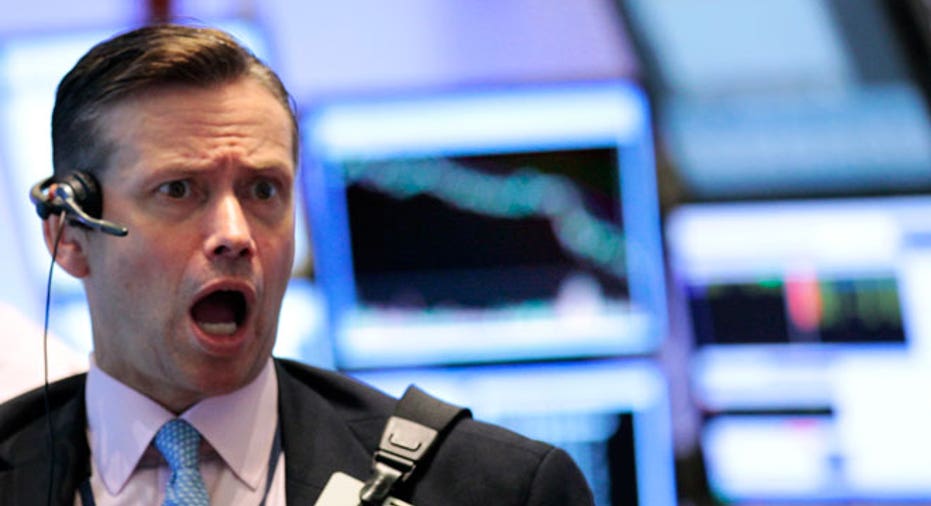October’s Scary Reputation Eased by QE3, ECB Moves

October has a reputation on Wall Street for being prone to stock-market crashes, as those with exposure to equities during the scary meltdowns in 1987 and 2008 surely recall.
Heading into October 2012 there are a number of potentially crash-inducing events for today’s investors to worry about, highlighted by a potential military conflict with Iran that causes crude oil prices to spike.
However, October’s bad reputation may be overdone by the high-profile prior crashes and the odds of a significant downdraft next month appear to have been drastically reduced by easy-money policies unleashed this month by central bankers around the world.
“The QE-to-Eternity policies of the ECB and the Fed have greatly diminished the odds of an imminent Lehman Moment,” Ed Yardeni of Yardeni Research wrote in a note on Tuesday.
The collapse of Lehman Brothers in September 2008 exacerbated the financial crisis and helped send the S&P 500 careening 16.9% the following October.
Likewise, the S&P 500 plummeted 21.8% in 1987, driven by the frightening 20.4% drubbing the index took on October 19, which is now known as Black Monday.
And don’t forget about October 1929 when the 19.9% crash on Wall Street kicked off the Great Depression.
Unfair Reputation?
Despite these scary October meltdowns, history shows that on average the month tends to be pretty typical.
According to S&P Capital IQ, the S&P 500 in October has averaged a 0.4% gain since 1900, increasing in value 57% of the time. By comparison, the S&P 500 has generated a gain of 0.54% in all months over that span, rising 58% of the time, S&P said.
While October ranks as just the ninth best month (December’s gain of 1.4% is the strongest average advance), the index has had strong October performances, including a 16.3% surge in 1974.
“October is a middle-of-the-road month, but is feared because of the crashes of 1987 and 1929,” said Sam Stovall, chief equity strategist at McGraw-Hill’s (NYSE:MHP) S&P Capital IQ.
Stovall also noted that five of the last 10 bear markets have bottomed in October, meaning “investors who have been brave enough to reenter the market in October have traditionally been rewarded.”
Iranian Jitters Linger
But enough with the history lesson -- what about this October?
Like any month, there are countless events that could cause a serious slump in the financial markets, but a negative geopolitical development tops the investor worry list.
Market participants have been keeping a close eye on rising tensions between Iran and the West, fearing an Israeli airstrike on Iranian nuclear facilities could shut down oil supplies in the crucial Strait of Hormuz.
“If a war happens, it would cause a temporary spike in the price of oil that would send the global economy back into a recession and oil prices much lower,” Yardeni said.
Interestingly enough, relations with Iran were also in the news in October 1987 as a front-page headline in The New York Times on the day after Black Monday read: “U.S. Ships Shell Iran Installation in Gulf Reprisal.”
In a briefing with reporters this week, Iranian President Mahmoud Ahmadinejad played down the odds of an Israeli strike, but warned “if such an attack were to happen, all equations in the region would see a deep change.”
Investors on Intrade, which takes bets on political outcomes, see a 29.9% chance of a U.S. and/or Israeli air strike on Iran before the end of the year, which is about even from mid-August.
Yet the energy markets, which have displayed an Iranian risk premium for much of the year, are hardly panicking as crude oil slumped 6.5% last week alone.
China, Fiscal Cliff Eyed
Also on the geopolitical front, Marc Chandler, global head of currency strategy at Brown Brothers Harriman, said investors should monitor the escalating tensions between China and Japan over disputed islands.
“A military threat lurks just below the surface,” Chandler wrote in a note this week. “It should be understood as a confrontation that may have a low probability of escalating, but whose risks, should it materialize, be highly significant.
On the home front, it’s probably too early for the financial markets to be significantly impacted by a negative event surrounding the looming fiscal cliff, which could send the U.S. into a recession if a compromise in Washington isn’t reached.
Talks to prevent this $500 billion batch of tax increases and spending cuts likely won’t kick off in earnest until after the November election, possibly not until after Thanksgiving.
Easing Erodes Euro Fears
Yet Wall Street’s biggest worry of the last two years -- a disorderly breakup of the eurozone -- appears to have diminished significantly in recent weeks, thanks largely to enormous efforts from the Federal Reserve and European Central Bank.
ECB President Mario Draghi has promised to do “whatever it takes” to prevent the currency union from crumbling and earlier this month unveiled plans to buy the sovereign bonds of countries drowning in high borrowing costs -- so long as they agree to a specific set of conditions.
“We are confident that the authorities now have the will and the means to prevent a near-term break-up of the euro (which would likely have produced disastrous market consequences),” analysts at Barclays (NYSE:BCS) wrote in a more bullish global outlook entitled “Don’t Fight the Fed” that was released on Tuesday.
At the same time, earlier this month the Fed unveiled a controversial and open-ended third round of quantitative easing, dubbed QE3, that is aimed at keeping interest rates super low and boosting risky assets like stocks.
Love it or hate it, QE3 helps mask some of the problems in the lackluster economic recovery and diminishes the odds of a near-term tumble on Wall Street.
“The bad news about the global economy has been offset by liquidity-crazed central bankers,” said Yardeni.